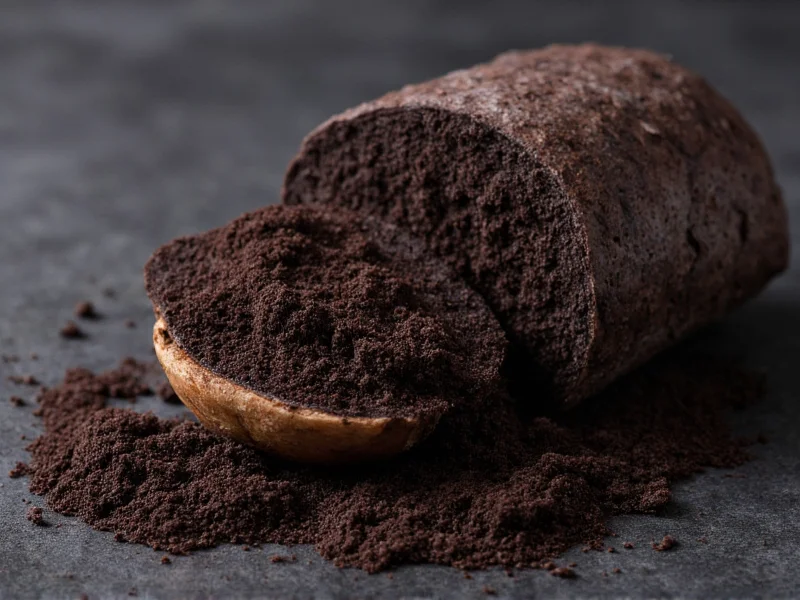Have you ever wondered why certain foods, drinks, or even medications taste like licorice when they don't actually contain licorice? This distinctive flavor profile appears in surprising places and understanding its origins can help you navigate your culinary experiences with greater awareness. Whether you love or hate that familiar anise-like taste, knowing what causes it will transform how you approach foods that taste like licorice but aren't actual licorice products.
The Science Behind Licorice-Like Flavors
The characteristic licorice flavor most people recognize comes from specific chemical compounds that interact with our taste receptors. While real licorice root contains glycyrrhizin (which is 30-50 times sweeter than sugar), many other plants contain anethole, the compound responsible for that similar sweet, aromatic profile.
Anethole is found in several unrelated plants that evolved this compound independently. This is a fascinating example of convergent evolution in flavor chemistry. When anethole dissolves in water or saliva, it forms microscopic crystals that create that distinctive mouthfeel associated with licorice-like flavors.
Glycyrrhizin, found only in licorice root (Glycyrrhiza glabra), produces a longer-lasting sweet taste with different chemical properties. This explains why real licorice has a more complex flavor profile than anise-based products that merely taste like licorice.
Common Foods and Beverages With Licorice Flavor Profile
Many everyday items contain compounds that create that familiar licorice-like taste. Understanding these can help you identify why certain products surprise you with this flavor profile.
| Product | Primary Compound | Flavor Intensity | Origin Notes |
|---|---|---|---|
| Anise seeds | Anethole (80-90%) | ★★★★★ | Mediterranean origin, stronger than star anise |
| Star anise | Anethole (90%) | ★★★★☆ | Chinese origin, key in five-spice powder |
| Fennel seeds | Anethole (50-60%) | ★★★☆☆ | Milder flavor, common in Italian cuisine |
| Tarragon | Anethole (varies) | ★★☆☆☆ | French culinary herb with subtle licorice notes |
| Rakomelo | Anethole | ★★★★☆ | Greek drink featuring star anise infusion |
| Sambuca | Anethole | ★★★★★ | Italian liqueur known for strong licorice flavor |
Unexpected Sources of Licorice-Like Taste
Many people are surprised to discover licorice-like flavors in products where they least expect them. Understanding why these items taste like licorice can prevent unpleasant surprises.
Medications: Several common medications contain anise or licorice derivatives as flavoring agents to mask bitter active ingredients. Cough syrups, throat lozenges, and some antibiotics often have this characteristic taste. The compound anethole is particularly effective at covering unpleasant medicinal flavors while remaining safe for consumption.
Alcohol and Spirits: Beyond the obvious absinthe and ouzo, many craft gins incorporate anise or fennel seeds as botanical ingredients. Some vodkas and specialty liqueurs also feature these flavor profiles, creating that distinctive licorice-like taste without listing licorice as an ingredient.
Processed Foods: Surprisingly, some processed meats, particularly certain sausages and deli meats, contain small amounts of anise or fennel as flavor enhancers. Even some chocolate products incorporate licorice root extract for complexity, creating an unexpected flavor dimension.
Cultural Variations in Licorice-Like Flavors
Cultural preferences dramatically influence how licorice-like flavors are used around the world. In Nordic countries, salty licorice (salmiakki) is extremely popular, while in the Netherlands, licorice is considered a national treat with hundreds of varieties.
Middle Eastern and Indian cuisines frequently use fennel and anise seeds in savory dishes, where Western palates might not expect that licorice-like flavor profile. In Mexican cuisine, hoja santa (holy leaf) provides a similar flavor to mole sauces without containing actual licorice.
The Japanese shiso plant offers a unique variation on this flavor profile, while Chinese five-spice powder relies heavily on star anise as its dominant flavor component. Understanding these cultural contexts helps explain why certain products taste like licorice when you might not anticipate it.
Navigating Licorice Flavors: Tips for Lovers and Haters
Whether you adore or detest that distinctive licorice-like taste, understanding its sources gives you greater control over your culinary experiences.
For licorice lovers: Seek out products containing actual glycyrrhizin rather than just anethole for a more complex flavor experience. Traditional European licorice candies from the Netherlands or Scandinavia often contain real licorice root extract. When shopping for anise-flavored products, look for those specifying "pure anise" rather than artificial flavoring for the most authentic experience.
For licorice avoiders: Check ingredient lists for anise, star anise, fennel, and anethole. Be aware that "natural flavors" on ingredient lists might include these compounds. When dining out, ask about specific ingredients in sauces and broths, as many restaurants use fennel or anise in their base flavors without highlighting this on menus.
Understanding the difference between actual licorice and licorice-like flavors can transform your shopping and dining experiences. This knowledge helps identify why certain products taste like licorice unexpectedly and allows for more informed choices based on your preferences.
Why Some Medicines Taste Like Licorice
The connection between medicine and licorice flavor isn't accidental. Pharmaceutical manufacturers often use anise derivatives as flavoring agents because they effectively mask bitter medicinal compounds while remaining generally recognized as safe (GRAS) by food safety authorities.
Anethole's chemical properties make it particularly effective at covering unpleasant tastes without interfering with medication efficacy. This explains why certain cough medicines, throat lozenges, and even some antibiotics have that distinctive licorice-like taste profile. The concentration is usually lower than in food products, creating a subtle background flavor rather than the dominant taste found in licorice candies.
Interestingly, real licorice root (containing glycyrrhizin) has actual medicinal properties and has been used in traditional medicine for centuries to soothe sore throats and digestive issues. This historical use further explains why licorice flavor appears in many throat and digestive remedies.











 浙公网安备
33010002000092号
浙公网安备
33010002000092号 浙B2-20120091-4
浙B2-20120091-4